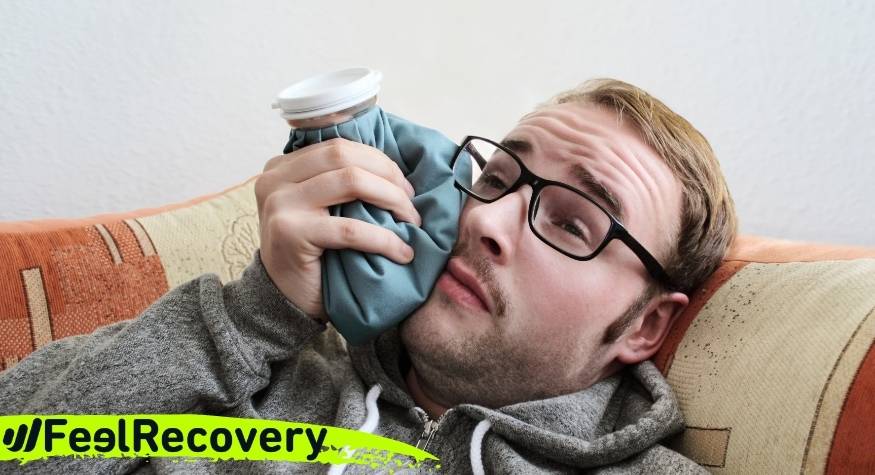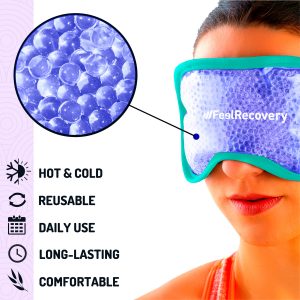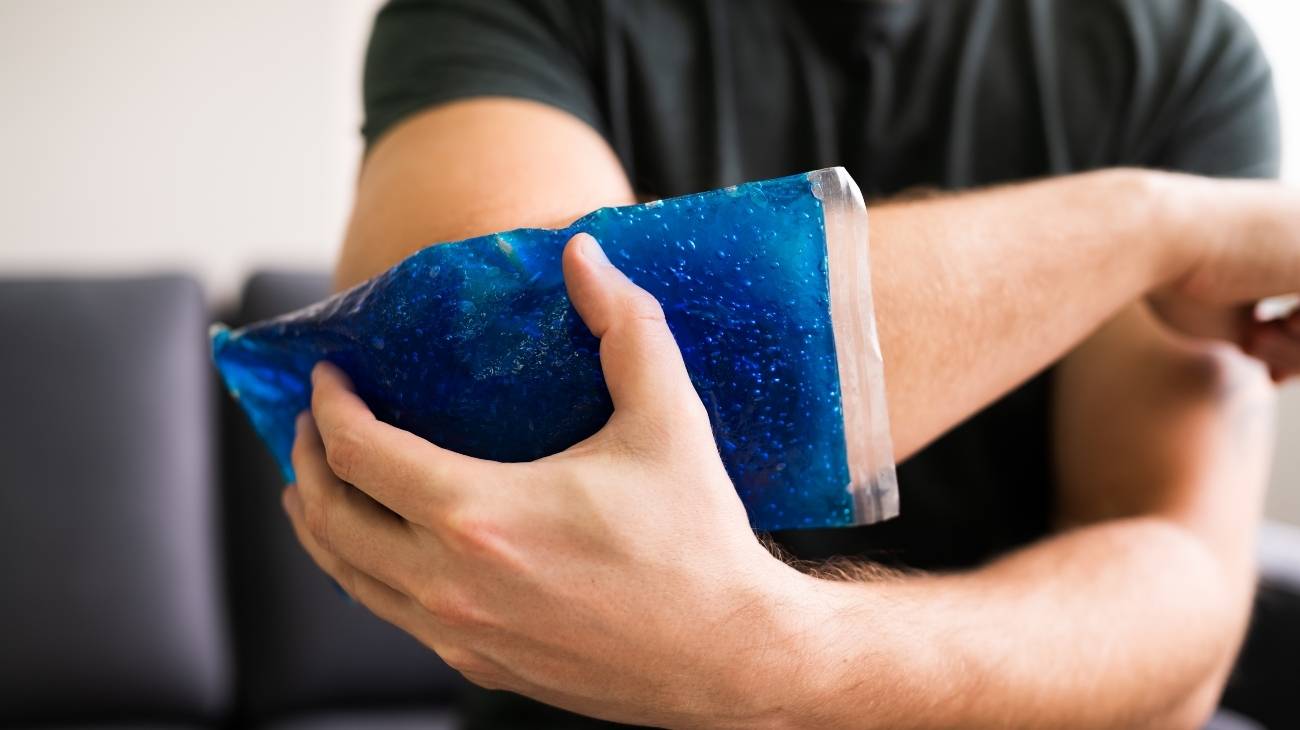Those who have suffered from a wisdom toothache know how overwhelming and torturous it can be. It is very difficult to relieve this type of pain, fortunately there are simple and effective options such as placing gel packs for cold and heat.
Join us to learn how to use hot and cold gel packs correctly to relieve wisdom toothache. Let's get started!
What are the causes and origin of toothaches?
They are called wisdom teeth because they usually appear between the ages of 18 and 40 with an average age of 25 to 30. This age range coincides with the period of maturity, and therefore the arrival of judgement. Toothache is one of the most frequent conditions of the oral cavity. On many occasions it can generate a very intense ailment that can take over the area of the jaw, the ear and the face.
If it is not assessed in time it can cause persistent, uncomfortable pain that can be intensified by movement or eating. Most commonly the pain appears during the night, although it can start at any time of the day.
Its causes can be very varied, but in this section we will tell you about the most common ones:
- Appearance of cavities: This is the main cause of wisdom toothache. It is generally associated with very poor oral hygiene which causes the appearance of cavities. When the damage to the molar is deep, it usually generates intense pain.
- Tooth abscess: When the damage to the surface of the tooth is very deep it can inflame the tooth pulp. This is known as pulpitis, causing intense pain as there is greater damage to the nerve. When the pulp is exposed in the oral cavity to the aggression of bacteria, it generates the appearance of an abscess.
- Periodontal disease: The pain is not always generated by a direct aggression with the molar but from the underlying tissues. Molars are surrounded by periodontal tissue and when there are gum diseases they can cause pain. This is characterized by bleeding gums, pain, inflammation and even mobility of the teeth.
- Dental trauma: A strong blow can cause pain in the affected area and depending on the impact, cracks in the tooth could occur. Any damage to the structure of the tooth can generate greater pain.
- Retained tooth: A retained tooth is that dental piece that has not emerged from the maxillary bone in the usual period. This phenomenon is much more frequent than it seems. It causes internal pain as it pushes on the wisdom teeth.
- Bruxism: Bruxism is an entity produced by stress, and has severe consequences for oral health. In this case the damage occurs when the lower jawbone hits the upper one during sleep. This causes more pain in the teeth because it generates tension in the temporomandibular joint.
- Other adjacent inflammations: Any inflammation that is close to the area of the teeth can cause pain. Sinusitis of the maxillary sinuses being close to the roots of the teeth and molars causes pain.
Bestseller
-
Gel Eye Mask for Puffy Eyes (Gold/Black)
$11.95 -
Gel Eye Mask for Puffy Eyes (Orange/Pink)
$11.95 -
Gel Eye Mask for Puffy Eyes (Purple/Turquoise)
$11.95 -
Ice Pack for Foot - Cold Therapy Socks (Black)
$24.95 -
Ice Pack for Foot - Cold Therapy Socks (Green)
$24.95 -
Ice Pack for Foot - Cold Therapy Socks (Pink)
$24.95
What are the advantages of applying cold to reduce wisdom toothache?
The cold has its great advantages in reducing pain in various parts of the body. Its most common use is in joints, muscles, ligament and tendons. Especially when acute injuries occur there. However, they can also be very useful for wisdom tooth pain. Cold temperatures can work as a powerful analgesic if used properly.
These are some of its advantages in wisdom toothache:
- Pain relief: As we have already told you, cold is a powerful analgesic because it has a vasoconstrictive action on the tissues. This causes a decrease in blood flow in the area, resulting in analgesia.
- Decrease in inflammation: The application of cold to the affected area of the tooth prevents and further reduces inflammation in adjacent structures.
- Muscle relaxation: In the case of molar pain caused by bruxism it helps to provoke greater relaxation of the muscles, tendons and ligaments.
- It prevents post-trauma oedema and inflammation: As with joint and muscle trauma, if there is an impact on the teeth the cold calms the pain and inflammation.
How to use cold gel packs and eliminate tooth and toothache?
Cold gel ice packs are an excellent alternative for eliminating tooth and toothache. There are many models on the market, but some of our models have an elastic band that serves to adjust the pad to the face.
One of them is the cold or hot gel pack for elbows and arms. Also, you can use the simple model of gel pad to hold with the hand in the cheek area. If you want to give a correct use to our packs filled with cold gel to eliminate toothache and molars, follow these recommendations:
Freeze the gel pad previously
Gel packs for cold storage should be placed in the refrigerator or freezer in advance. Ideally, they should be cooled for a period of 2 hours, which is the ideal minimum time to generate the desired analgesic effects.
Do not use on broken or cracked molars
Although the analgesic properties of cold can be beneficial in the case of broken or cracked molars, care must be taken. The cold can penetrate the nerve and cause intense pain that is very difficult to control. Therefore, you should always take into account the severity of the condition of the tooth or molar.
Take the pack out of the freezer
After 2 hours you must take the pad out of the freezer or refrigerator. Check that the temperature to the touch is correct, if it is very cold wait until it loses a little temperature.
Place in the affected area
You won't need any extra covers or cloths to place the ice gel pack in the jaw area where the tooth hurts. Because, our products include safe touchable sleeves. Also, it is important to take care of the condition of the skin of the face, as this area is much thinner and more delicate.
Perform exposure intervals
You can place it on the affected jaw for 10 to 20 minutes and let it rest for 1 hour. Remember that excessive cold can cause damage to the skin, the important thing is to manage to calm the pain.
Use 24-72 hour sessions
You can use the cryotherapy treatment to keep the pain calm for 24 to 72 hours. However, you can use it whenever you need to improve the pain of a wisdom tooth. However, we recommend that you calm the pain with cold gel packs and go to a dentist as soon as possible. He will make a better assessment and indicate the appropriate treatment.





































